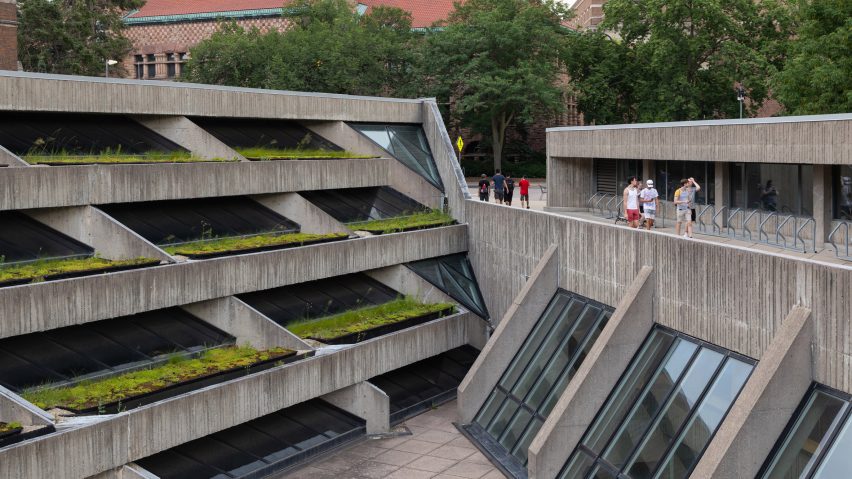
Unsung architecture in the American Midwest spotlighted in new book
A Brutalist school, an Art Deco church and soaring grain silos are among the diverse array of buildings featured in the new tome, Midwest Architecture Journeys. Book editor Zach Mortice discusses five highlights.
Released in October, Midwest Architecture Journeys is a 287-page, hardcover book from Belt Publishing that explores under-recognised buildings, places and spaces in the American Heartland.
The book primarily focuses on work in the following states – Iowa, Illinois, Indiana, Michigan, Minnesota, Missouri, Ohio, Oklahoma, Pennsylvania and Wisconsin. Buildings by famed architects such as Frank Lloyd Wright, Louis Sullivan and Bertrand Goldberg are included, as are projects by lesser-known figures such as Walter Bailey and Lillian Leenhouts.
Some of the featured projects linger just outside of the architectural canon, while others are simple, everyday structures that are not designed by architects.
"It's a book that's a testament to the wild diversity of architectural experimentation here, that also points to an essential character of humble utopian optimism earned through hard work," said the book's Chicago-based editor, Zach Mortice.
The book is divided into four sections – journeys, places, people, and vernacular – each with a collection of essays and accompanying images.
In addition to an abundance of photographs, the tome contains 31 individual essays by writers from around the US, including an introduction by architecture critic Alexandra Lange.
The first chapter discusses road trips, while the second spotlights work by well-known Midwestern architects. The third section looks at specific buildings and spaces, while the final chapter examines new types of vernacular architecture.
Read on as Mortice spotlights five highlights from the book:
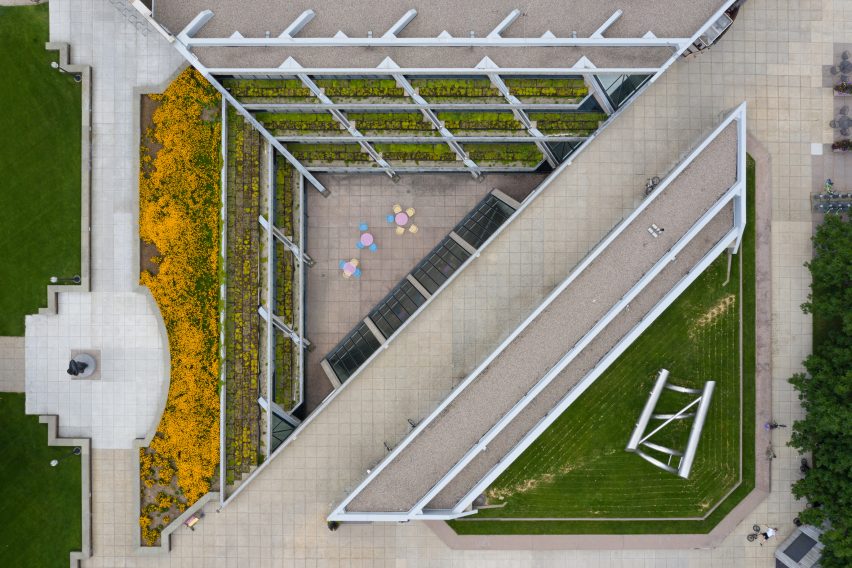
Williamson Hall in Minneapolis-St Paul
Located at the University of Minnesota, Williamson Hall is a Brutalist, subterranean building that was envisioned by architect David Bennett and completed in 1977. Mortice said the building is notable for two key reasons.
"It's an example of architects in the Midwest taking on bold experiments to deal with climate change, which were already well understood in the 1970s," he told Dezeen. "And it's perhaps the apotheosis of the Midwestern Prairie School idea of buildings that are responsive to and shaped by the land."
The building's design was influenced by the 1970s energy crisis, when architects were imagining underground buildings with temperatures that would remain comfortable and stable year-round.
"The desire to conserve energy and build underground was largely forgotten in the go-go 1980s, when profit was the only goal worth innovating for," said Mortice. "Today, these subterranean structures call to mind a queasy nostalgia for futures that never quite happened."
The asymmetrical Williamson Hall is organised around a sunken, open-air courtyard. The concrete structure has numerous plant-filled terraces, which Bennett designed in collaboration with landscape architect Clinton Hewitt.
"Vines were planted to grow in the summer, hanging down to block out excess light," said Mortice. "During the winter, the vines would dissipate, letting in more light, and subsequently, heat. It was an integrated climate system that depended equally on the architecture, landscape, and earth itself."
The book's essay about Williamson Hall was written by Andy Sturdevant.
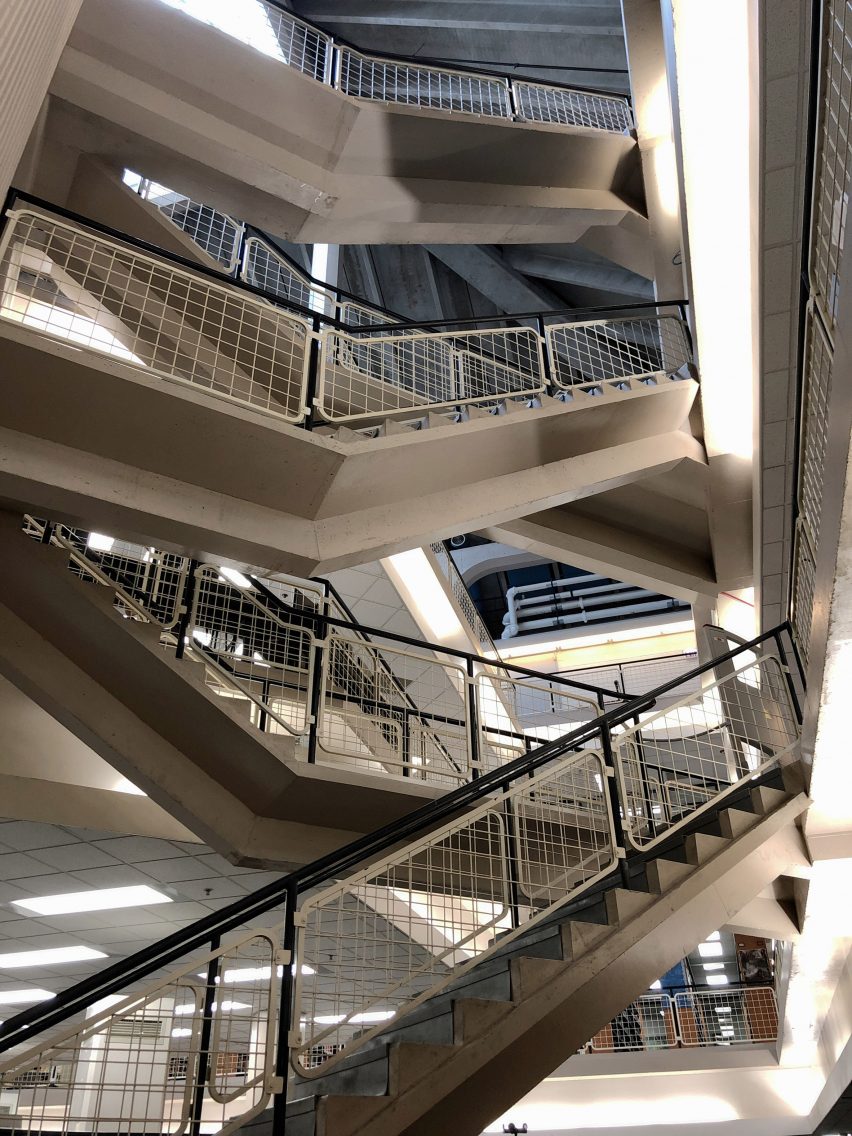
Wright College by Bertrand Goldberg
This building complex at a Chicago community college was designed by local architect Bertrand Goldberg. It consists of several Brutalist-style, concrete blocks punctured with relatively small, square windows. A tubular walkway connects to a 130-foot (40-metre) steel pyramid, which houses offices and a library.
The complex has a 1960s aura, said Mortice, yet it was completed in 1992.
"Wright College is the most amazing and wonderfully bizarre building in Chicago no one knows about," said Mortice. "This is as close as you can get to Archigram or Alphaville in the Midwest."
Mortice, who authored the book's essay on Wright College, is particularly intrigued by the pyramidal structure, which he described as "complex and otherworldly".
The exterior has a cybernetic quality, while the interior is "a wild matrix of offset stairs, platforms and catwalks – actual Piranesian complexity".
"You'll fine study nooks placed under the space tube skyways, and quiet corners at the pyramid's edges, good for a nap between class," he said. "The idiosyncrasy of the space encourages you to keep exploring, to find your secret place in Goldberg's intricate machine."
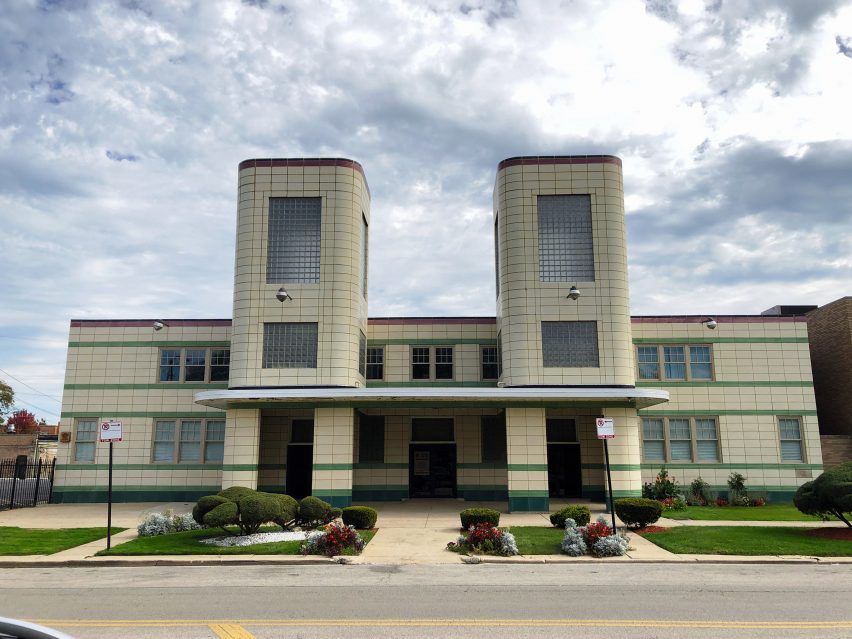
The First Church of Deliverance by Walter Bailey
Between 1916 and 1970, millions of African-American residents in the rural South packed up and moved to northern cities such as New York and Chicago – a historical event known as the Great Migration. The influx of new residents had a significant impact on the built environment.
"Looking back over the last 100-plus years of Midwestern history, it's impossible to assess the cultural and architectural landscape of this place without focusing on the Great Migration," said Mortice.
Among the buildings featured in Mortice's book is The First Church of Deliverance, located in the Bronzeville neighbourhood on Chicago's Southside. The church was started by Reverend Clarence Cobbs, a charismatic man who initially held services in a vacant hat factory.
Around 1939, Cobbs hired Walter Bailey – the first licensed African-American architect in Illinois – to transform the factory into a proper church.
"Bailey's design is a totally singular and exceptionally modern solution," said Mortice. "It's a modest, cream-coloured Streamline Art Moderne structure, and looks more like a movie theatre than a place of worship."
The exterior features green stripes, glass-brick windows and a pair of towers with rounded corners. Inside, the Art Deco building has an illuminated cross that stretches across the ceiling.
"It was a bracingly contemporary environment that must have been adept at transforming agrarian Southern migrants new to the shores of Lake Michigan into cosmopolitan urbanists," said Mortice.
The project took place long before adaptive reuse became trendy, said Mortice, noting that it was "a budget-conscious approach for people with few resources to create the spaces they needed".
The book's essay on The First Church of Deliverance was authored by Mark Clemens.
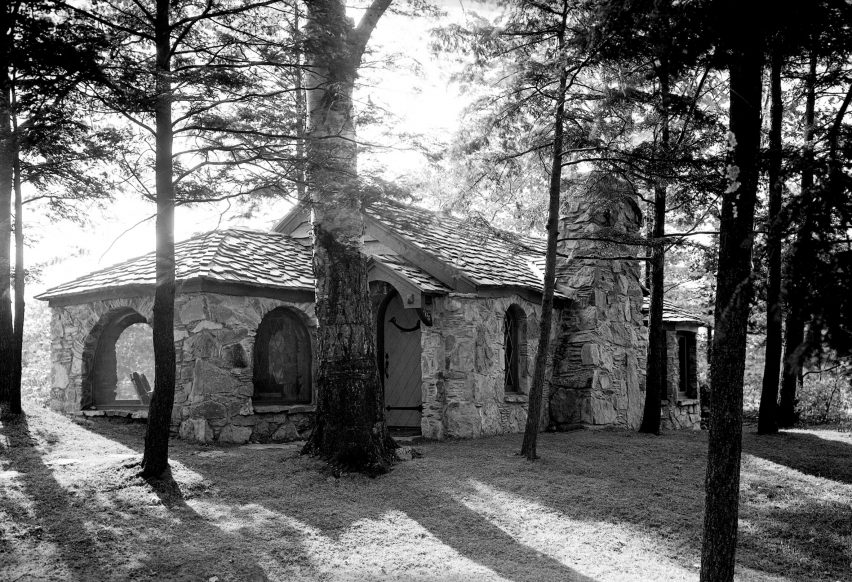
Boulder Buildings by Earl Young
When it comes to architecture that demonstrates a reverence for nature, buildings by Frank Lloyd Wright often come to mind. But Midwest Architecture Journeys looks beyond Wright to explore other examples of earth-inspired architecture – such as a collection of "boulder buildings" created by Earl Young, a self-taught builder in Michigan.
Young lived in Charlevoix, a resort town along Lake Michigan. He became so enamoured with the "Paleolithic, glacier-formed boulders" in the area that he started using them to construct homes and small commercial buildings.
"Often called Hobbit Homes, their emphasis on local materials and organic forms are an obvious parallel to Frank Lloyd Wright," said Mortice. "Like much of Wright's work, these boulder homes seem to spring directly from the land, but this time, there's a sense of escapist whimsy that Wright would never have tolerated."
The buildings feature thick walls and large fireplaces that were "both primal and totemic, fit for powering a blacksmith's forge or a warming up a wizard's cauldron", said Mortice.
Young started his series of boulder buildings around 1918 and continued until his death in the 1970s. He was known to dig up boulders and then hide them in the woods – stashing them away for future use.
"He would often revisit them decades later to use them in a building, never having written down their dimensions, or sketched out a blueprint for how it would all come together," said Mortice. "He kept this entire world in his head."
The book's essay on the boulder buildings was written by Jonathan Rinck.
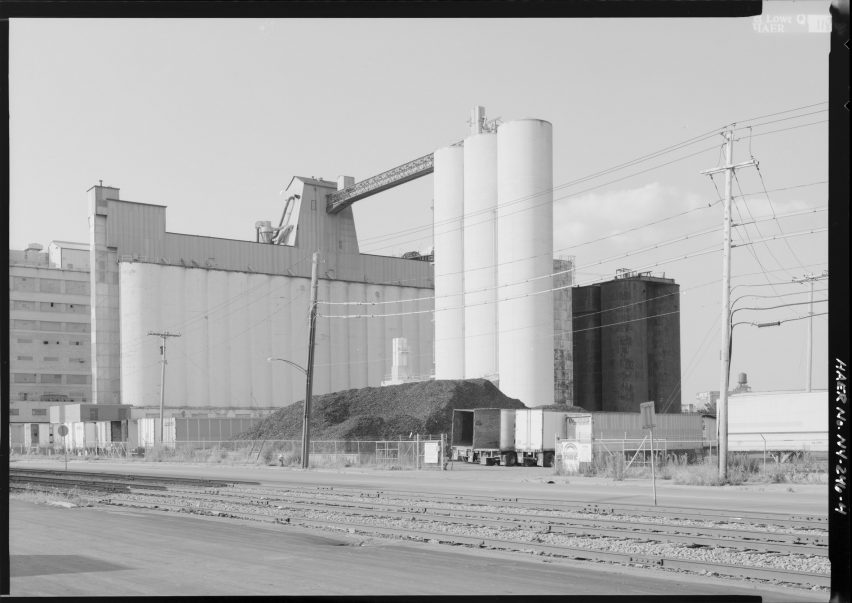
Grain Silos
Given the prevalence of grain farms in the Midwest, the area is often referred to as America's breadbasket. Fittingly, Mortice's book spotlights the tall silos used to store wheat, corn, barley, and other grains that eventually get eaten by humans and livestock.
"Anywhere in the world, so much of the built infrastructure that defines a place is architecture made without architects – and grain silos are definitive icons representing the agricultural heritage of the Midwest," Mortice told Dezeen.
Mortice spent a good portion of his childhood on an Iowa farm, and grain elevators were the first "monumental structures" he encountered.
"I would nervously watch my dad climb to the top of them, and cover my ears to shield myself from the roar of their augurs as they spewed grain into trucks," he said.
In the innumerable small towns that constitute the vast Midwest, the grain silo is a ubiquitous feature that carries symbolic meaning.
"Grain towers are something like secular church steeples – vertical signifiers of the region's cultural and economic regime," Mortice said.
The book's essay on silos was written by Lynn Freehill-Maye.
Photography is courtesy of Zach Mortice. Main image is by David Schalliol/Mas Context.